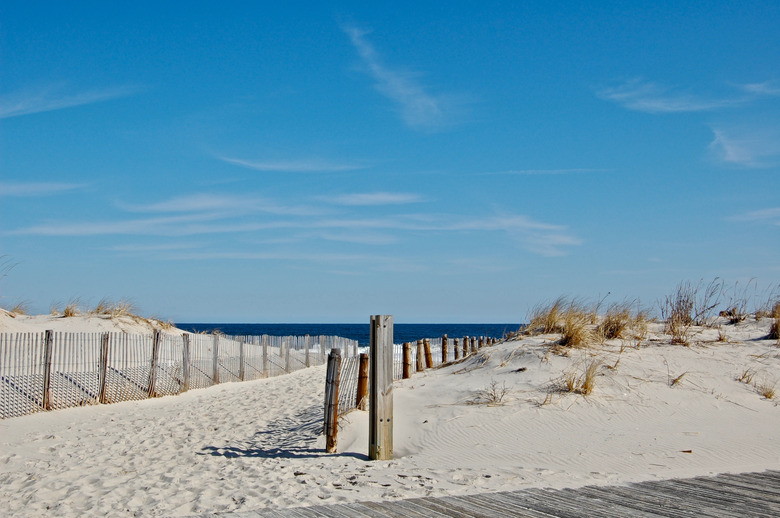Types Of Crabs On The New Jersey Shore
New Jersey locals and tourists are not the only ones who frequent the Jersey Shore in the spring and summer. During these seasons, the entire Jersey shoreline is a destination for several crab species. Crabs use the Jersey Shores for breeding and nesting purposes. Crabbing, or the capturing of wild crabs, is a popular recreational activity on the Jersey Shore. Most crab species in New Jersey, however, are not used for commercial purposes.
Horseshoe Crabs
Horseshoe Crabs
In New Jersey, horseshoe crabs are usually found on the shores of Delaware Bay in south Jersey. Horseshoe crabs receive their name from their exoskeletal structure, which resembles a horseshoe on the shell's underside. These crabs live in shallow saltwater environments, emerging from the saltwater and sand from May through early summer to mate. Horseshoe crabs are living fossils, meaning they have remained unchanged from earlier geologic times. Living fossils also have no close living relatives in the classification system. These crabs are not suitable for eating.
Blue Crabs
Blue Crabs
The blue crab (Callinectes sapidus) has metallic blue coloration on the top part of its legs. The crab's shell is solid black or dark gray. These crabs are one of the most abundant crab species found on the Jersey Shore, populating all regions of New Jersey's Atlantic shoreline. Blue crabs are also one of the largest crabs in New Jersey at approximately 10 inches wide, including the crab's legs. The blue crab is also one of the most popular crabs for the seafood industry, according the New Jersey Division of Fish and Wildlife.
Fiddler Crabs
Fiddler Crabs
Found throughout the Jersey Shore coastline, the fiddler crab is called "fiddler" due to its enlarged right claw, which is almost three times as large as its left claw; only male fiddler crabs have this physical attribute. These crabs are able to regenerate their large claw if it falls off its body. The male fiddler crab's right claw is used for impressing female fiddler crabs and warding off male competitors. Fiddler crabs also live in saltwater estuaries near the Atlantic coast. This crabs species is most active during the late spring and summer. In the winter, fiddler crabs burrow into the sand for warmth. Fiddler crabs are not used for commercial purposes.
Hermit Crabs
Hermit Crabs
Hermit crabs are a common crab species in New Jersey and are the Jersey Shore's unofficial pet, according to The New York Times. Hermit crabs require empty gastropod shells for protection since they do not have a natural shell on their bodies. As they grow larger, hermit crabs have to find larger shells to accommodate them. The hermit crab's body features a curled abdomen, which is soft and vulnerable. Most hermit crabs are found on the ocean's surface, but some will occasionally walk onto dry land. Hermit crabs are not suitable for eating.
Cite This Article
MLA
Davis, Skip. "Types Of Crabs On The New Jersey Shore" sciencing.com, https://www.sciencing.com/types-crabs-new-jersey-shore-8679737/. 22 November 2019.
APA
Davis, Skip. (2019, November 22). Types Of Crabs On The New Jersey Shore. sciencing.com. Retrieved from https://www.sciencing.com/types-crabs-new-jersey-shore-8679737/
Chicago
Davis, Skip. Types Of Crabs On The New Jersey Shore last modified March 24, 2022. https://www.sciencing.com/types-crabs-new-jersey-shore-8679737/
